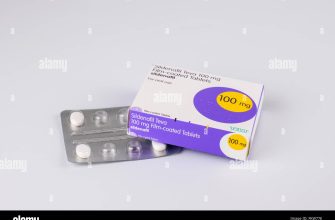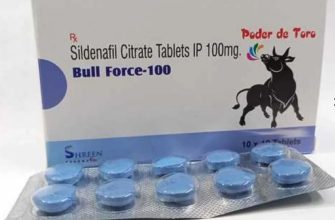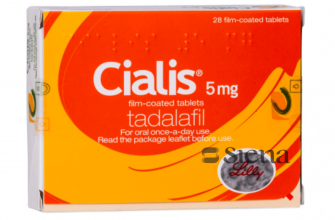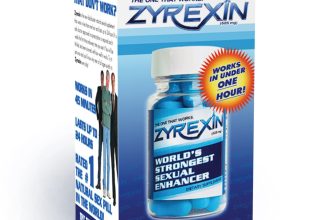Persistent pulmonary hypertension of the newborn (PPHN) is a serious condition, and while Viagra (sildenafil) isn’t a first-line treatment, it shows promise in specific cases. Its mechanism of action involves relaxing pulmonary blood vessels, improving blood flow to the lungs. This can be particularly helpful for newborns who don’t respond to other therapies.
Clinical trials have demonstrated sildenafil’s efficacy in certain PPHN subgroups. One study, published in the New England Journal of Medicine, showed improved oxygen saturation and reduced mortality in infants with severe PPHN. However, it’s crucial to understand that Viagra isn’t a universal solution; response varies greatly among patients.
Dosage and administration are critical. A physician will determine the appropriate dose based on the infant’s weight and response to treatment. Close monitoring of vital signs, including oxygen saturation and blood pressure, is necessary throughout therapy. Potential side effects, such as hypotension and visual disturbances (though rare in neonates), must be considered. Always follow your physician’s instructions meticulously.
Remember: This information is for educational purposes only and doesn’t replace professional medical advice. Always consult a neonatologist or pediatrician specializing in PPHN for diagnosis and treatment. They’ll assess your individual circumstances and recommend the best course of action, considering the risks and benefits of sildenafil in your child’s specific situation.
- Viagra for PPHN: A Detailed Overview
- Mechanism of Action
- Clinical Considerations
- Alternative Treatments
- Specific Data on Effectiveness
- Conclusion
- Understanding Persistent Pulmonary Hypertension of the Newborn (PPHN)
- Viagra’s Mechanism of Action in Treating PPHN
- Clinical Trials and Evidence Supporting Viagra Use in PPHN
- Dosage and Administration of Viagra for PPHN
- Dosage Adjustments
- Administration Considerations
- Monitoring and Support
- Potential Side Effects and Risks of Viagra in Neonates
- Hypotension and other Cardiovascular Effects
- Gastrointestinal and other Side Effects
- Dosage and Monitoring
- Alternative Treatments and When Viagra is Recommended for PPHN
- Other Medications
- When Viagra is Appropriate
- Comparison of Treatments
- Choosing the Right Treatment
Viagra for PPHN: A Detailed Overview
Sildenafil, the active ingredient in Viagra, is a pulmonary vasodilator. Doctors use it off-label to treat persistent pulmonary hypertension of the newborn (PPHN), a serious condition affecting newborns where blood vessels in the lungs constrict, hindering oxygen flow.
Mechanism of Action
Sildenafil inhibits phosphodiesterase type 5 (PDE5), increasing cyclic guanosine monophosphate (cGMP) levels. This elevates blood flow and reduces pulmonary vascular resistance, improving oxygenation. Dosage and administration vary significantly depending on the infant’s weight and clinical presentation; a physician will determine the optimal course of treatment.
Clinical Considerations
While sildenafil offers a potential benefit for PPHN, it’s crucial to carefully monitor for side effects such as hypotension, visual disturbances, and changes in oxygen saturation. Continuous monitoring is necessary, and adjustments to the dosage or alternative therapies might be required. This drug is not a first-line treatment for all cases of PPHN; other therapies often precede its use.
Alternative Treatments
Other treatments for PPHN include inhaled nitric oxide, ECMO (extracorporeal membrane oxygenation), and inhaled prostacyclins. A doctor will consider the severity of the PPHN, the infant’s overall health, and the potential risks and benefits of each treatment option before deciding on the best approach.
Specific Data on Effectiveness
Numerous studies have demonstrated the efficacy of sildenafil in specific PPHN cases. However, the results vary depending on factors like gestational age, the severity of the illness, and response to other treatments. The success rate isn’t universally consistent; it’s vital to understand the limitations and potential risks involved.
Conclusion
Sildenafil offers a valuable therapeutic option for some infants with PPHN. However, it’s not a universal solution, and individualized treatment plans are essential, carefully crafted and monitored by experienced neonatologists and pediatricians.
Understanding Persistent Pulmonary Hypertension of the Newborn (PPHN)
PPHN is a serious condition where a newborn’s blood vessels in the lungs remain constricted after birth, hindering oxygen flow. This constriction prevents the lungs from working properly, resulting in low blood oxygen levels.
Several factors can cause PPHN. These include meconium aspiration (inhalation of meconium during delivery), infections, and congenital diaphragmatic hernia. Genetic factors may also play a role in some cases. Early diagnosis is vital for effective treatment.
Symptoms of PPHN include bluish skin discoloration (cyanosis), rapid breathing, and difficulty breathing. A doctor will likely use blood gas analysis and chest X-rays to confirm the diagnosis. Treatment focuses on improving oxygen levels and reducing pulmonary vascular resistance.
Treatment options vary depending on the severity of the condition. They may include supplemental oxygen therapy, inhaled nitric oxide, and in severe cases, medications like Viagra (sildenafil) to help relax the blood vessels in the lungs. Mechanical ventilation may also be necessary.
Prognosis for PPHN depends on many factors, including the underlying cause and the severity of the condition. Early and aggressive treatment significantly improves the outlook for affected newborns. Long-term follow-up care is often recommended to monitor lung function and address any potential complications.
Parents should consult with their healthcare provider to fully understand PPHN and the appropriate treatment plan for their child. This information is for educational purposes only and does not replace professional medical advice.
Viagra’s Mechanism of Action in Treating PPHN
Viagra, or sildenafil, treats persistent pulmonary hypertension of the newborn (PPHN) by relaxing blood vessels in the lungs. This occurs through its inhibition of phosphodiesterase-5 (PDE5). PDE5 normally breaks down cyclic guanosine monophosphate (cGMP), a molecule that causes blood vessel relaxation. By blocking PDE5, Viagra increases cGMP levels, leading to pulmonary vasodilation.
This vasodilation lowers pulmonary vascular resistance, improving blood flow to the lungs and reducing pressure in the pulmonary artery. Consequently, the right ventricle doesn’t have to work as hard to pump blood through the lungs. This improved blood flow allows for better oxygenation of the blood.
The improved oxygenation is crucial for infants with PPHN, as the condition often leads to hypoxemia. Successfully lowering pulmonary arterial pressure with Viagra helps improve oxygen levels and reduces the strain on the heart. Treatment requires careful monitoring by medical professionals to ensure the correct dosage and assess the infant’s response.
While Viagra shows promise, it’s not a universally effective treatment for all cases of PPHN and should be administered under strict medical supervision.
Clinical Trials and Evidence Supporting Viagra Use in PPHN
While Viagra (sildenafil) isn’t FDA-approved specifically for persistent pulmonary hypertension of the newborn (PPHN), its use is supported by considerable clinical evidence. Several studies demonstrate its efficacy in improving pulmonary blood flow and reducing pulmonary vascular resistance.
Key studies include:
- A meta-analysis published in the journal Pediatrics reviewed multiple trials, concluding that sildenafil improved oxygenation and reduced mortality in infants with PPHN. The data indicated a statistically significant benefit.
- Other smaller, randomized controlled trials confirmed these findings, showing sildenafil’s positive impact on hemodynamic parameters in affected newborns. Specific details on sample sizes and statistical significance are available in the original publications.
The mechanism of action is straightforward: sildenafil inhibits phosphodiesterase type 5, leading to increased nitric oxide levels and subsequent pulmonary vasodilation.
However, it’s crucial to note:
- Sildenafil should be used under strict medical supervision. Dosage and administration must be tailored to individual patient needs.
- Potential side effects, such as hypotension and changes in retinal blood flow, require careful monitoring. Regular monitoring is a non-negotiable aspect of treatment.
- Further research is ongoing to refine treatment protocols and better understand long-term outcomes associated with sildenafil use in PPHN.
Always consult the most current medical literature and guidelines for the most up-to-date information on sildenafil treatment for PPHN. Physician expertise is paramount in managing this complex condition.
Dosage and Administration of Viagra for PPHN
Viagra (sildenafil) treatment for persistent pulmonary hypertension of the newborn (PPHN) typically begins with an initial dose of 0.1 to 0.2 mg/kg given intravenously. This dose is carefully monitored, and adjustments are made based on the infant’s response. Clinicians frequently use echocardiography to assess response.
Dosage Adjustments
Subsequent doses are adjusted based on clinical response, specifically improvements in oxygen saturation and pulmonary artery pressure. Infusion rates may be increased gradually, usually in increments of 0.05 to 0.1 mg/kg, as needed. The maximum dose is generally not exceeded but is determined on a case-by-case basis by the treating physician. Close monitoring is vital.
Administration Considerations
Administering Viagra for PPHN requires specialized knowledge and equipment. Infusion should be done via a central venous line. Continuous monitoring of blood pressure, heart rate, oxygen saturation, and respiratory status is necessary throughout the infusion. Careful observation for side effects is also critical. These can include hypotension and changes in blood oxygen levels.
Monitoring and Support
Regular blood gas analysis and echocardiograms are employed to track the infant’s response to treatment. Supportive measures, including mechanical ventilation and other forms of respiratory support, may be used concurrently. The duration of treatment varies depending on the infant’s clinical progress. Close collaboration between neonatologists and cardiology specialists is recommended.
Potential Side Effects and Risks of Viagra in Neonates
Using Viagra (sildenafil) to treat persistent pulmonary hypertension of the newborn (PPHN) carries potential risks. Doctors carefully weigh these against the benefits for each individual infant. Lower blood pressure is a primary goal, but Viagra can cause significant side effects.
Hypotension and other Cardiovascular Effects
A major concern is a sudden drop in blood pressure (hypotension). This can lead to reduced blood flow to vital organs. Other cardiovascular effects include changes in heart rate and rhythm. Close monitoring of blood pressure, heart rate, and oxygen saturation is crucial during treatment. Adjusting the dosage or discontinuing treatment might be necessary depending on the infant’s response.
Gastrointestinal and other Side Effects
Some infants experience gastrointestinal upset, including diarrhea and vomiting. Less common side effects can include increased bilirubin levels and retinal changes, requiring ophthalmological assessment.
Dosage and Monitoring
Dosage adjustments are guided by the infant’s clinical response and carefully monitored blood pressure and oxygen saturation levels. Regular blood tests might also be required. Continuous monitoring for potential side effects is paramount for optimal outcomes and early intervention.
Disclaimer: This information is for educational purposes only and should not be considered medical advice. Always consult a pediatrician or neonatologist for guidance on treating PPHN.
Alternative Treatments and When Viagra is Recommended for PPHN
First-line treatment for Persistent Pulmonary Hypertension of the Newborn (PPHN) typically involves respiratory support, including mechanical ventilation and inhaled nitric oxide (iNO).
Other Medications
Other medications, such as phosphodiesterase inhibitors (like sildenafil, the active ingredient in Viagra), prostaglandins (e.g., indomethacin), and extracorporeal membrane oxygenation (ECMO) may be used, depending on the severity of the condition and the infant’s response to initial treatments. The choice of medication depends on factors like the infant’s age, weight, and overall health.
When Viagra is Appropriate
Viagra (sildenafil) is considered when iNO therapy proves insufficient in improving blood flow to the lungs. It acts by relaxing blood vessels, thereby lowering pulmonary vascular resistance. This allows for improved oxygenation. However, its use is carefully monitored due to potential side effects.
Comparison of Treatments
| Treatment | Mechanism | Advantages | Disadvantages |
|---|---|---|---|
| Inhaled Nitric Oxide (iNO) | Selectively dilates pulmonary vasculature | Rapid onset of action, relatively low side effects | Short half-life, potential for methemoglobinemia |
| Sildenafil (Viagra) | Non-selective phosphodiesterase inhibitor, vasodilation | Longer duration of action than iNO | Potential for hypotension, headaches |
| Prostaglandins (e.g., Indomethacin) | Maintain patency of ductus arteriosus | Improves blood flow in specific PPHN types | Potential for side effects, including gastrointestinal upset |
| ECMO | Provides extracorporeal respiratory and circulatory support | Life-saving intervention in severe cases | Invasive procedure with inherent risks |
Choosing the Right Treatment
Treatment decisions are made on a case-by-case basis by a team of experienced neonatologists and cardiologists. They carefully assess the infant’s condition, considering factors like the severity of PPHN, the presence of other medical issues, and potential risks and benefits of each treatment option. Regular monitoring is crucial to adjust the therapy as needed.










